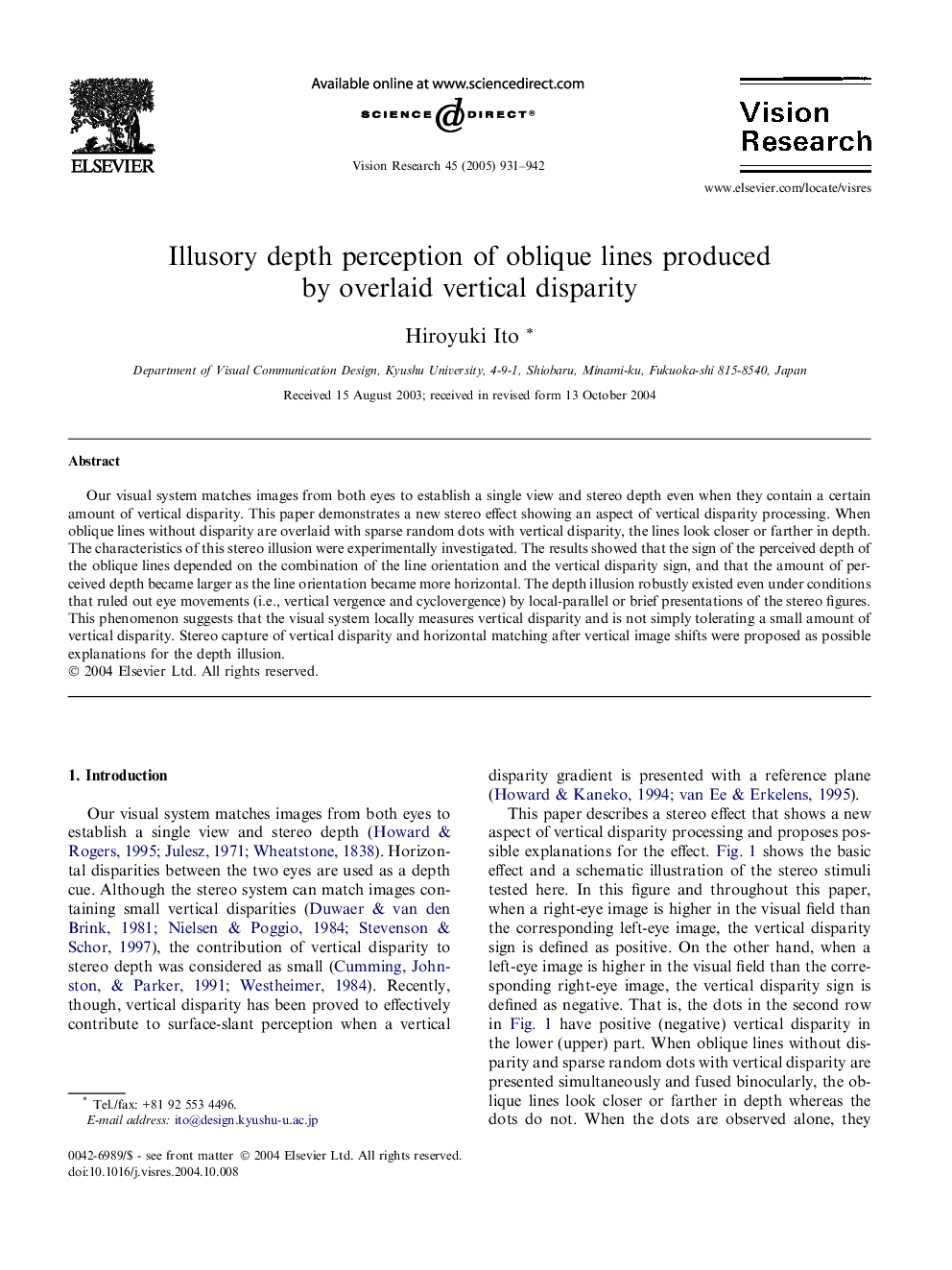| Article ID | Journal | Published Year | Pages | File Type |
|---|---|---|---|---|
| 9348667 | Vision Research | 2005 | 12 Pages |
Abstract
Our visual system matches images from both eyes to establish a single view and stereo depth even when they contain a certain amount of vertical disparity. This paper demonstrates a new stereo effect showing an aspect of vertical disparity processing. When oblique lines without disparity are overlaid with sparse random dots with vertical disparity, the lines look closer or farther in depth. The characteristics of this stereo illusion were experimentally investigated. The results showed that the sign of the perceived depth of the oblique lines depended on the combination of the line orientation and the vertical disparity sign, and that the amount of perceived depth became larger as the line orientation became more horizontal. The depth illusion robustly existed even under conditions that ruled out eye movements (i.e., vertical vergence and cyclovergence) by local-parallel or brief presentations of the stereo figures. This phenomenon suggests that the visual system locally measures vertical disparity and is not simply tolerating a small amount of vertical disparity. Stereo capture of vertical disparity and horizontal matching after vertical image shifts were proposed as possible explanations for the depth illusion.
Related Topics
Life Sciences
Neuroscience
Sensory Systems
Authors
Hiroyuki Ito,
